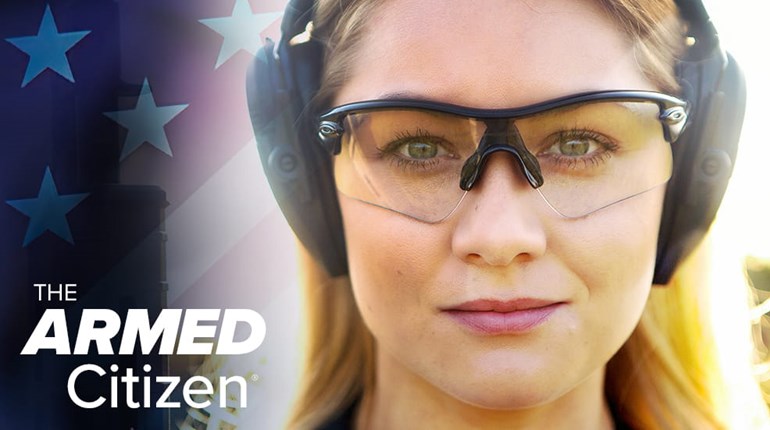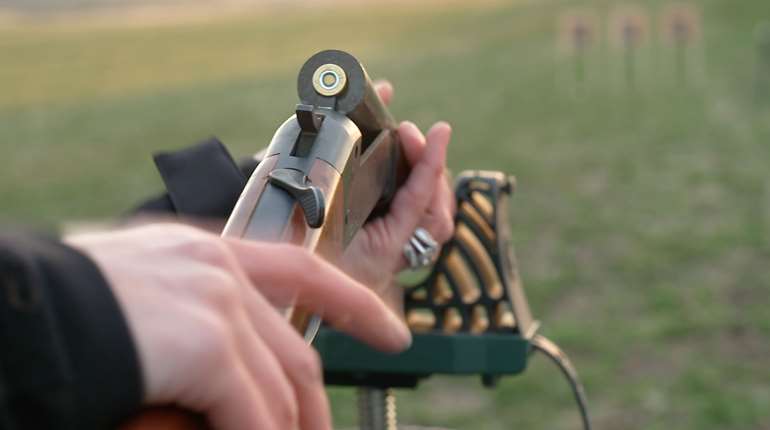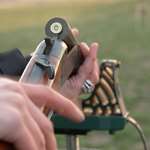
You’re running an errand, paying casual attention to what’s going on around you, and you spot someone who pings your “something isn’t quite right” radar. This is when you flip to condition orange and immediately start paying attention to this potential threat, trying to decide if he is indeed a threat or something you can safely ignore.
This switch from condition yellow to condition orange is clear and simple and relatively no-stakes. You can’t mess it up as long as you’re paying attention. But the next step—switching from condition orange to condition red—has much higher-stakes, and it’s vitally important that you make the switch in at the right time. You can’t go drawing your handgun on everyone who looks a little “off” before you reasonably decide that they’re a real threat. But on the other hand, if you wait until a threat has drawn his gun or has gotten within arm’s reach of you, it’s too late to do anything about it. Knowing when to go from orange to red without waiting too long is an important skill, and fortunately, there are four little words that can help you make the decision.
Show Me Your Hands
If someone is approaching you and you think they might pose a threat, but it’s not clear yet, we encourage you to use your voice to try to stop them, to draw attention to the situation and/or to force them to reveal their intentions. Words like “Stop!” and “That’s close enough” will work, but my favorite command is “Show me your hands.”
We talk a lot about command voice, but these four words might not require command voice. Issuing commands to criminals sometimes riles up their anger or makes them feel humiliated, both of which might make things worse in some situations. “Show me your hands” might be better just casually but firmly stated. However, you should not say it if you’re not willing to immediately back it up by taking defensive action (which might be drawing your gun). This is your last-ditch effort to stop a threat from targeting you, and if he’s a criminal, he’ll be able to tell if you’re bluffing.
The beauty of “show me your hands,” when said at a great enough distance, is twofold:
- You will know by his response what his intentions are.
- If he has bad intentions, he’ll have to play his cards immediately (probably sooner than he had planned) or, if he doesn’t, you’ve made it harder for him to get to his weapon.
Criminals won’t approach you with a weapon drawn; it’s too obvious. Their knife or gun will be concealed until they’re within attack range of you—either holstered under their clothing, so their hands remain visible, or in their hand but concealed under their clothes, like tucked under their jacket or in their sleeve. “Show me your hands” must be spoken while he’s still far enough away that he’s not comfortable drawing his weapon, because it will either attract attention from passersby or he’s not close enough to use it and thus you’ll have time to retreat or react.
Three Responses
There are three basic responses to “Show me your hands.”
The first is compliance. Someone who means you no harm will generally respond to “show me your hands” by holding his hands up in the air, and he’ll probably stop walking toward you. He’ll almost certainly seem confused as to why a random stranger would say this to him. A bad actor whose weapon is still holstered or securely concealed might do the same (although he’s less likely to seem confused because he knows he’s up to no good and he knows why you’ve given the command), so showing you his hands is not an immediate all-clear signal—but if he does hold his hands up, they’re now farther away from his weapon and you’ve let him know that you see what he’s up to and you’re not going to be an easy victim.
The second is avoidance. Be very wary of shifty-looking people who advance toward you with their hands in their pockets, under their clothing or behind their back. If the person approaching you is a criminal and he already has a weapon in his hand under his jacket or in a pocket, he won’t be able to immediately respond to your command without messing up his attack plan. Anyone who disobeys the “show me your hands” request/command or acts sketchy while he tries to delay should be treated as a threat until you determine otherwise. It’s condition red time.
The third is the worst option: He might draw his weapon earlier than he had planned and keep advancing on you. Reaching for a weapon is a pretty distinctive move that you will recognize, and he’s not as close to you as he wanted to be, so although things have now kicked off, you’ve at least bought yourself some time and distance and thrown his original plan for a loop. This is why it’s so important to pay attention to your surroundings and issue the “show me your hands” command when a potential threat is still a good distance away.
No Hesitation
“Show me your hands” is best used early, but you don’t want to go screaming commands at strangers unnecessarily, so use your best judgement when deciding if someone is a potential problem.
When you ask someone to show you their hands, you must be ready to flip to condition red immediately if needed, because if he is a bad actor and he hasn’t changed his mind about attacking you, things will happen very fast. Depending on the circumstances, you might be moving your hand to your own defensive weapon as you say the words.
And don’t forget, if he’s far enough away for this to work, he might be far enough away for you to retreat to a safer position. Just be sure you’re running toward safety, not away from danger. Whenever possible, when you see someone who trips your switch into condition orange, increase the distance between you. This allows you more time to observe and decide if they’re really a problem or not and to try a command like “show me your hands.” Whether you bark it as a command or casually state it as more of a firm request is up to your assessment of the situation, but whatever you do, when you utter those four words, be prepared to take immediate action, because you will very quickly have the answer to “is he a threat or not?”














































